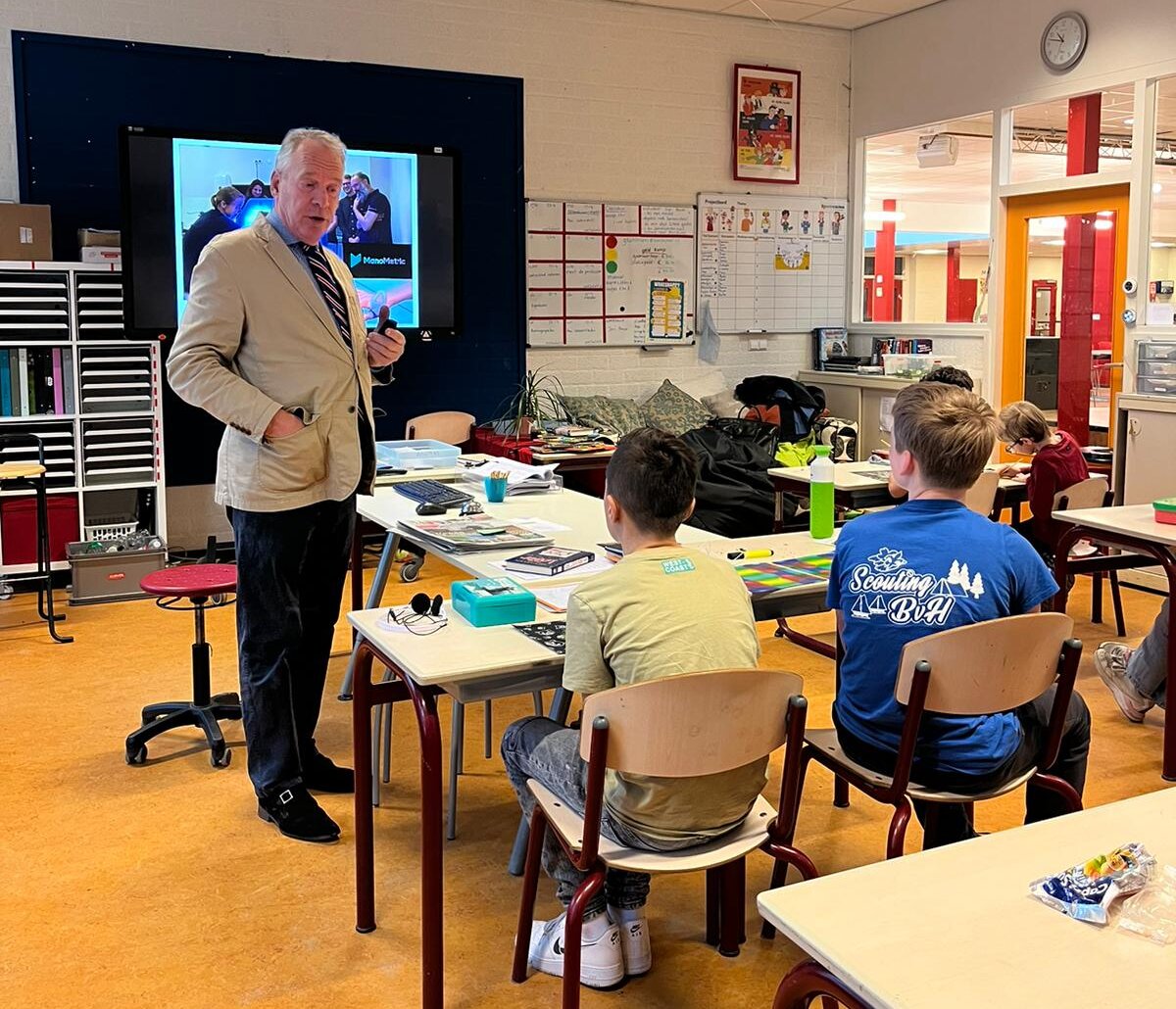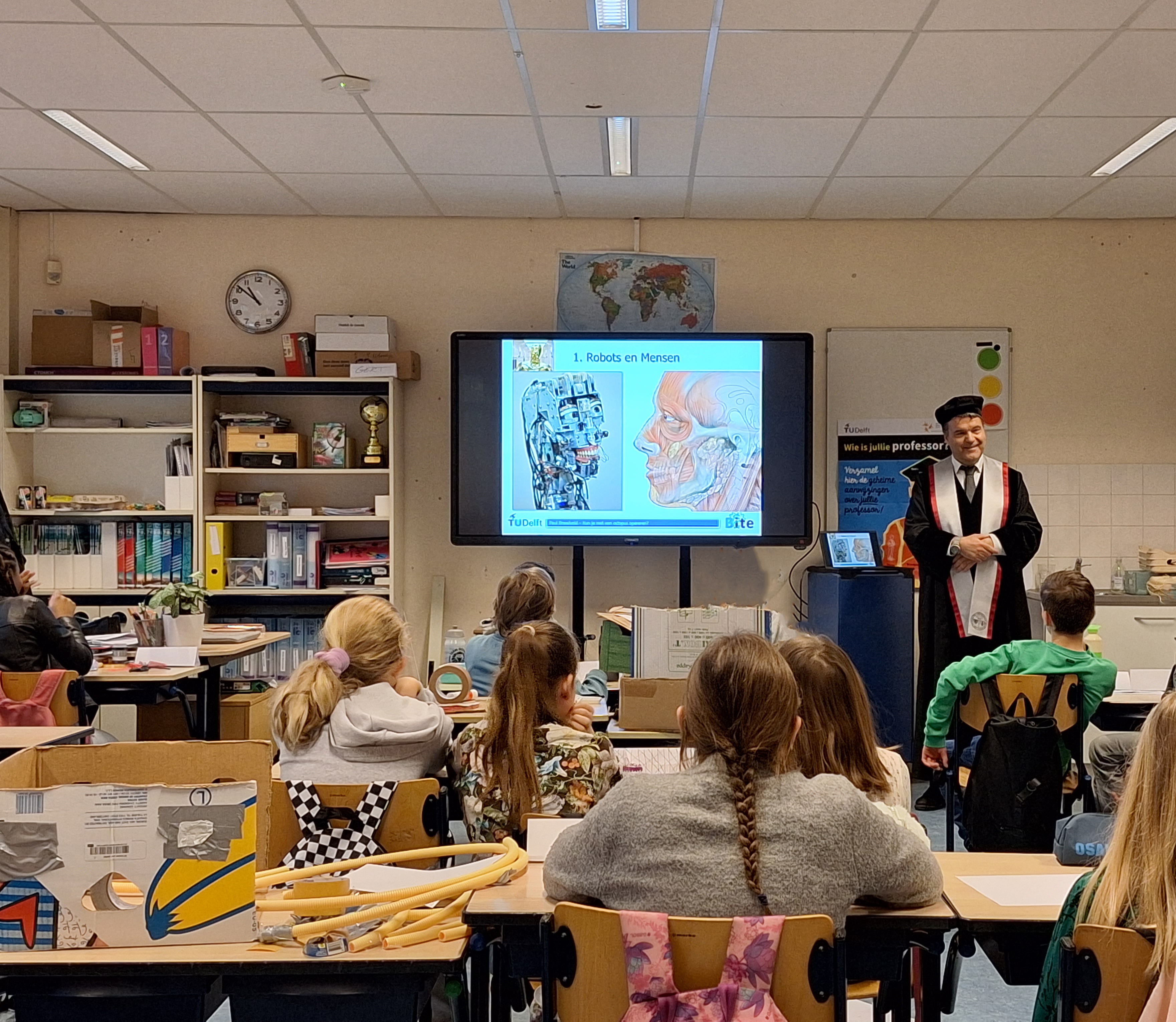‘Do you consider yourself an inventor or a professor?’
This year’s ‘Meet the Professor’ event took place on 17 April. TU Delft uses the ‘Meet the Professor’ event to celebrate the city’s birthday together with primary schools. During this event, TU Delft professors give a guest lecture about their research at Delft primary schools. Professors Maarten van der Elst and Paul Breedveld represented the Faculty of Mechanical Engineering in 2024.
Maarten van der Elst, professor of Clinical Patient Safety and Efficiency, visited Year 6 at ‘De Bonte Pael’ primary school. This is the third time he has taken part in ‘Meet the Professor’. He deliberately takes the time to participate because he believes it is an important initiative. First, to get young people interested in technology and healthcare. Indeed, there is an increasingly greater shortage of skilled technicians and healthcare workers. Second, he believes it is important to give something back to the city of Delft. Plus, he enjoys being surprised, time and again, by the students’ questions.
The children were well prepared and wanted to know everything about the professor: what is his favourite food, what are his dogs called, which football team does he support and why did he become a surgeon? He explained that when he was young, a friend of his was seriously injured in a car accident. It was then that Van der Elst decided to become a surgeon (before that, he wanted to be a professional football player or a fireman). He still loves helping people, for example to regain the use of their arm and to eat independently after an accident.
Van der Elst showed the children examples of how technology can help a surgeon and how hospital staff and doctors work together with TU Delft.
Engineers from the university have invented a range of smart devices to help doctors and patients. For example, smart forceps that can do so many tasks that the surgeon no longer needs to use six different forceps. In just a few weeks, students developed a handy wrist light that makes it possible to shine more light on the area under the surgeon’s hands where he or she needs to operate. Another example was an exoskeleton that makes wearing a lead apron against X-rays less strenuous. Or even an exoskeleton that allows people with paralysed legs to walk again.
Van der Elst concluded by urging on the children to choose engineering or healthcare, saying that we face major challenges in the future: sustainability, recycling, less plastic and less energy consumption.
Paul Breedveld, professor of Medical instruments & Bio-Inspired Design, once again stood in front of a class full of enthusiasm. He visited Year 5 of the Max Havelaar Children's Centre. No matter how often Paul speaks and teaches for other groups, primary school visits are always special to him. For the occasion, he was also wearing his toga.
He showed them drawings and designs he made himself as a child and as a student at TU Delft. When he was in primary school, the popularity of space travel at the time sparked his interest in engineering.
At TU Delft, he realised that the human body actually contains many mechanical components as well. He showed the class a video of a robot that looks human. ‘Is it a human being or a robot?’ he asked the pupils. ‘And could the inside of a robot be similar to the inside of a human?’
He then explained the link between engineering and medicine by talking about the different surgical tools he has designed.
For example, he explained how the ovipositor of a parasitoid wasp or the flexible tentacles of an octopus have inspired the design of different surgical tools. If Paul had to choose, his favourite would be a particular tool with a mechanical hose because it is totally unique.
‘But if you invent these things, are you not really an inventor? So why do they call you a professor?’ one of the students asked. Together they came to the conclusion that professors are in fact inventors too.



